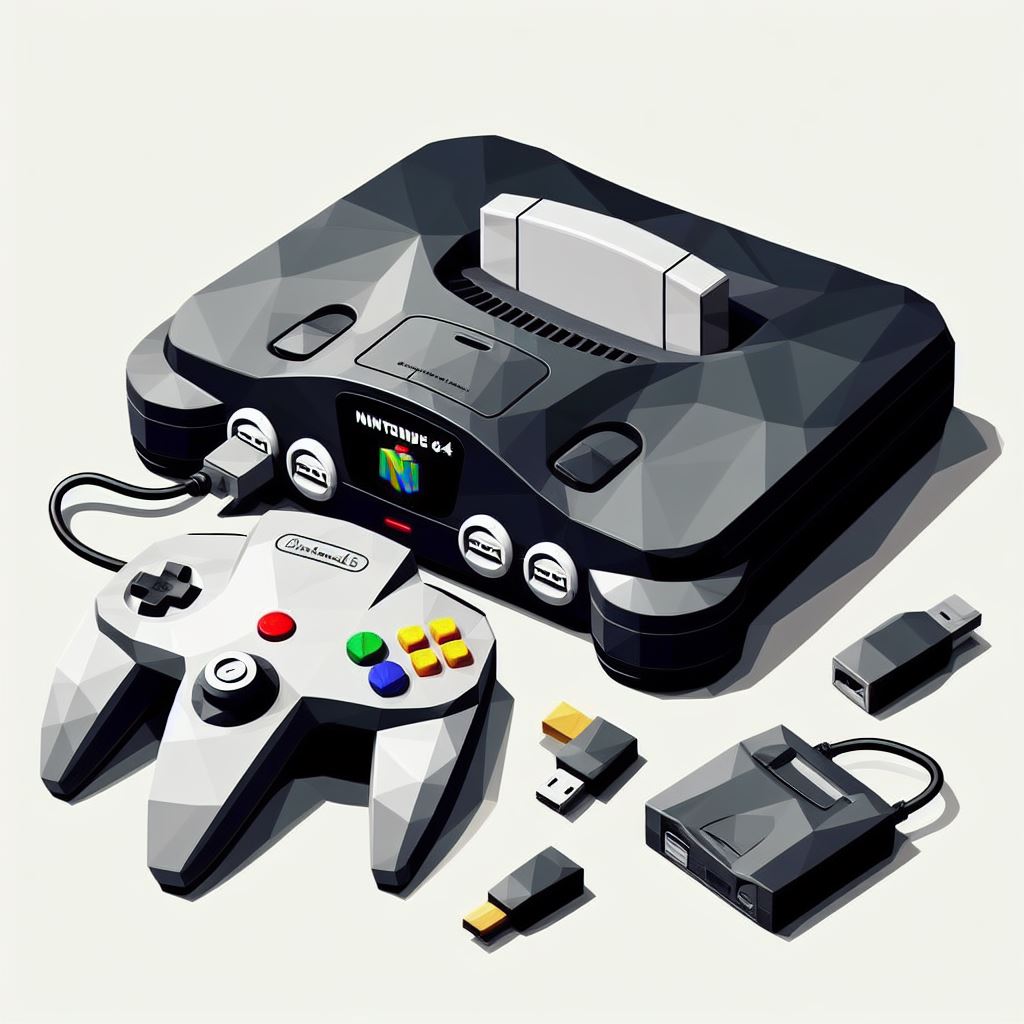The Lamen
The Analogue 3D will run Super Mario 64 at 4K

The Nintendo 64 has been a hard one to experience for a young generation of games because of its emulation challenges. The Analogue 3D wants to fix that by not emulating it at all.
Photo: Bing AI
Analogue has made a name for itself revamping retro consoles with the golden touch of modern hardware, probably best known for the Analogue Pocket handheld. The company is now giving some love to the Nintendo 64 with the Analogue 3D — a “reimagining of the N64” that will allow you to run Super Mario 4K, Ocarina of Time, and more at 4K.
Analogue’s announcement of the 3D comes with no specific release date beyond a 2024 window. All that has been shared is a brief glimpse of the console, and the wireless 8BitDo controller it releases with.


All we get to look at is a corner of the Analogue 3D. The accompanying 8BitDo controller, on the other hand, appears much clearer in the announcement.
Photos: Analogue
- The Analogue 3D will support wireless Bluetooth as well as the original-style wired N64 controllers.
- For the purists, Analogue states that the console will also support “Original Display Modes” that will be “quality recreations of specific model CRT’s and PVM’s.”
Like Analogue’s take on the Game Boy, SNES, and Sega Genesis, Analogue 3D will run original N64 cartridges — with 100 percent compatibility, says the company. However, the device won’t support ROMs or even Analogue openFPGA.
- What the company describes as the “pinnacle of preserving video game hardware for the future,” openFPGA is open-source software that allows you to run games almost as accurately as the original hardware would.
- The Analogue Pocket’s support of openFPGA has led to the creation of several “cores,” including those for the NES, SNES, Sega Genesis, and Atari among others.
The Nintendo 64 had elements like dithering and anti-aliasing that it added to the final video output — leading to its characteristic blurry 3D graphics. However, such elements have made the experience tough to replicate through emulation.
While some emulators come pleasantly close, the Analogue 3D claims a near-original, if not perfect, experience. This is due to the field-programmable gate array (FPGA) tech that allows it to function identically to the original hardware.